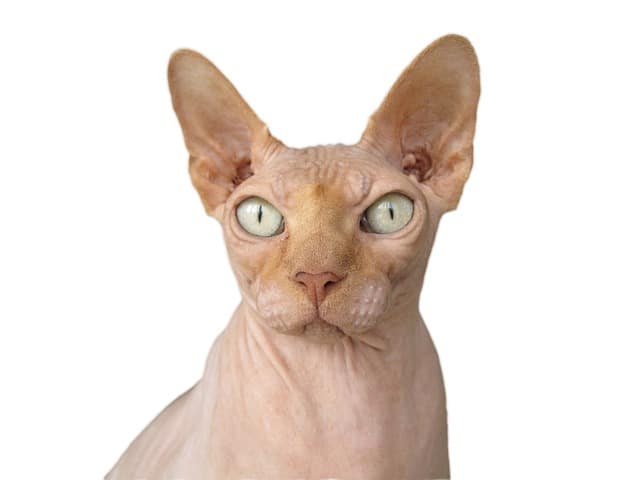
The Sphynx is a long-lived but very delicate cat: let’s find out together what are the most common diseases that affect this breed.
Dubbed the naked cat, the Sphynx has become very popular with cat lovers in recent years due to its distinctly unique appearance. Let’s get to know all the information concerning your health together, to find out which common diseases the Sphynx is more predisposed to .
Common diseases in the Sphynx

The Sphynx is one of the longest-lived breeds of cats. Suffice it to say, in fact, that the average duration of his life is between 12 and 20 years.
Given the absence of hair, however, these specimens are more predisposed to both the onset of hereditary diseases and problems related to the delicacy of their skin. Among the most common diseases in Sphynx are:
- Hypertrophic cardiomyopathy;
- Congenital myopathy;
- Skin diseases;
- Respiratory tract infections.
Hypertrophic cardiomyopathy
Hypertrophic cardiomyopathy is on the list of the most common diseases in Sphynx.
This is a genetic disease that affects the cat’s heart, causing thickening of the left ventricle. As a result, the ventricular lumen, by shrinking, is unable to collect the normal amount of blood.
This impairs the regular blood circulation of the cat, as the ventricle becomes rigid and inelastic. Among the symptoms of hypertrophic cardiomyopathy are:
- Artimia;
- Heart murmur;
- Weakness;
- Difficulty in breathing;
- Decreased appetite;
- Pulmonary edema;
- Pleural effusion;
- Heart failure.
Unfortunately, there is currently no cure for this condition. The only way to counteract hypertrophic cardiomyopathy is through prevention, by preventing the reproduction of cats affected by this disease.
Congenital myopathy
Among the most common hereditary diseases in Sphynx is congenital myopathy.
It is a neurological disease that affects the muscles of the cat, causing a progressive weakening. Congenital myopathy usually occurs between 3 and 23 weeks of age in cats. Symptoms of this disease are:
- Fatigue;
- Head swaying
- Weakness;
- Megaesophagus;
- Tremor;
- Scapular protrusion.
Described for the first time only in 1989, it is a disease that is little known to date, for which there is no definitive treatment.
Skin diseases
Given the absence of hair in the Sphynx , skin disorders are among the most common diseases that can affect this breed.
In particular, the naked cat is particularly predisposed to the onset of:
- Dermatitis, due to an accumulation of sebum caused by the absence of the mantle;
- Sunburn
- Otitis and other ear diseases in cats, caused by the accumulation of ear wax;
- Skin tumors;
- Urticaria pigmentosa.
Given the many ailments that naked kittens can experience, it is essential to take care of its daily hygiene, making sure to regularly clean eyes, ears and skin. In this article we will see in detail how to take care of the Sphynx.
Respiratory tract infections
Finally, respiratory tract infections close the list of the most common diseases in Sphynx.
These include:
- Colds in cats
- Cough;
- Bronchitis;
- Pneumonia;
- Asthma;
- Allergy.
To prevent the onset of these common diseases in hairless cats, keeping the Sphynx warm is crucial.
If the cat shows the first signs of discomfort, promptly contacting the veterinarian will favor a quick recovery, reducing the risk that the animal’s health conditions may worsen.






